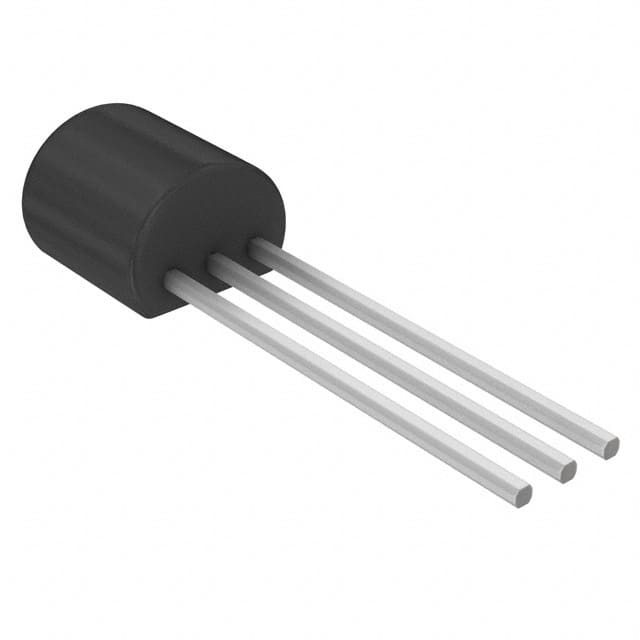2N3906BU Transistor
Product Overview
Category:
The 2N3906BU is a PNP bipolar junction transistor (BJT).
Use:
It is commonly used for amplification and switching of electronic signals.
Characteristics:
- Low power, high voltage applications
- High current gain
- Low noise
Package:
The 2N3906BU is typically available in a TO-92 package.
Essence:
This transistor is essential for various electronic circuits requiring signal amplification and switching.
Packaging/Quantity:
It is usually packaged in reels or tubes with varying quantities depending on the supplier.
Specifications
- Collector-Emitter Voltage: 40V
- Collector-Base Voltage: 40V
- Emitter-Base Voltage: 5V
- Collector Current: 200mA
- Power Dissipation: 625mW
- Transition Frequency: 250MHz
Detailed Pin Configuration
- Emitter (E)
- Base (B)
- Collector (C)
Functional Features
- High current gain
- Low saturation voltage
- Fast switching speed
Advantages
- Versatile applications
- Low noise performance
- Reliable and widely available
Disadvantages
- Limited power handling capability
- Sensitive to temperature variations
Working Principles
The 2N3906BU operates as a current-controlled switch or amplifier. When a small current flows into the base, it controls a larger current flowing between the collector and emitter.
Detailed Application Field Plans
- Audio amplifiers
- Signal processing circuits
- Switching circuits
- Voltage regulators
Detailed and Complete Alternative Models
- BC557
- 2N4403
- MPSA42
- BC327
In conclusion, the 2N3906BU transistor is a versatile component widely used in electronic circuits for amplification and switching purposes. Its low power and high voltage capabilities make it suitable for various applications, although it has limitations in power handling and temperature sensitivity. Engineers and hobbyists often consider alternative models such as BC557, 2N4403, MPSA42, and BC327 when designing circuits with similar requirements.
Word Count: 311
Lista 10 Vanliga frågor och svar relaterade till tillämpningen av 2N3906BU i tekniska lösningar
What is the 2N3906BU transistor used for?
- The 2N3906BU is a general-purpose PNP bipolar junction transistor commonly used for amplification and switching applications.
What are the typical operating conditions for the 2N3906BU?
- The 2N3906BU typically operates at a maximum collector-emitter voltage of 40V and a maximum collector current of 200mA.
Can the 2N3906BU be used for audio amplification?
- Yes, the 2N3906BU can be used for small-signal audio amplification due to its low noise and high gain characteristics.
How do I determine the pinout of the 2N3906BU transistor?
- The pinout of the 2N3906BU is typically Emitter-Base-Collector (EBC), but it's important to refer to the datasheet for specific information.
What are some common circuit configurations using the 2N3906BU?
- Common circuit configurations include common emitter amplifiers, switch circuits, and voltage regulators.
What are the thermal considerations when using the 2N3906BU in a design?
- It's important to consider heat dissipation and use appropriate heatsinking if the transistor is expected to dissipate significant power.
Can the 2N3906BU be used in high-frequency applications?
- While the 2N3906BU has limitations at higher frequencies, it can still be used in moderate frequency applications such as audio amplification.
What are the key parameters to consider when selecting the 2N3906BU for a specific application?
- Key parameters include maximum voltage and current ratings, gain, frequency response, and power dissipation.
Are there any common failure modes associated with the 2N3906BU?
- Common failure modes include thermal runaway due to excessive heat and breakdown under high voltage or current conditions.
Where can I find reliable datasheets and application notes for the 2N3906BU?
- Datasheets and application notes for the 2N3906BU can be found on manufacturer websites, distributor platforms, and electronics component databases.


